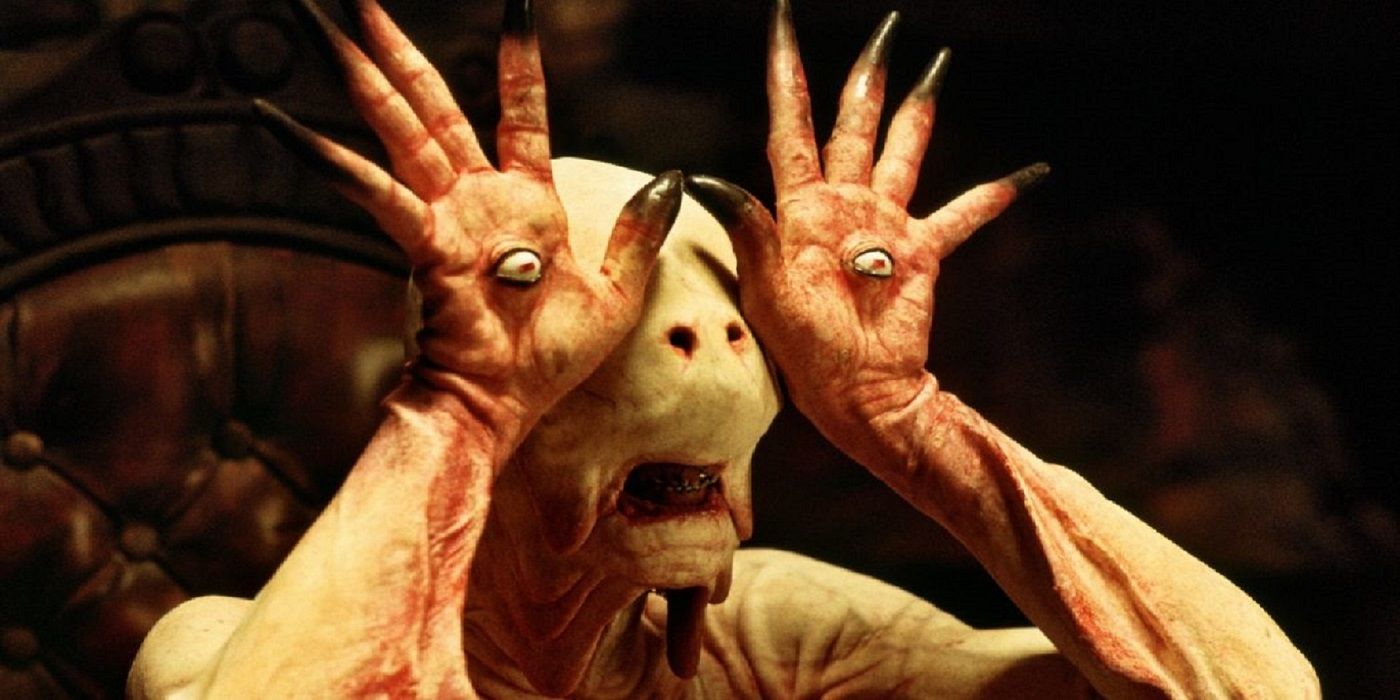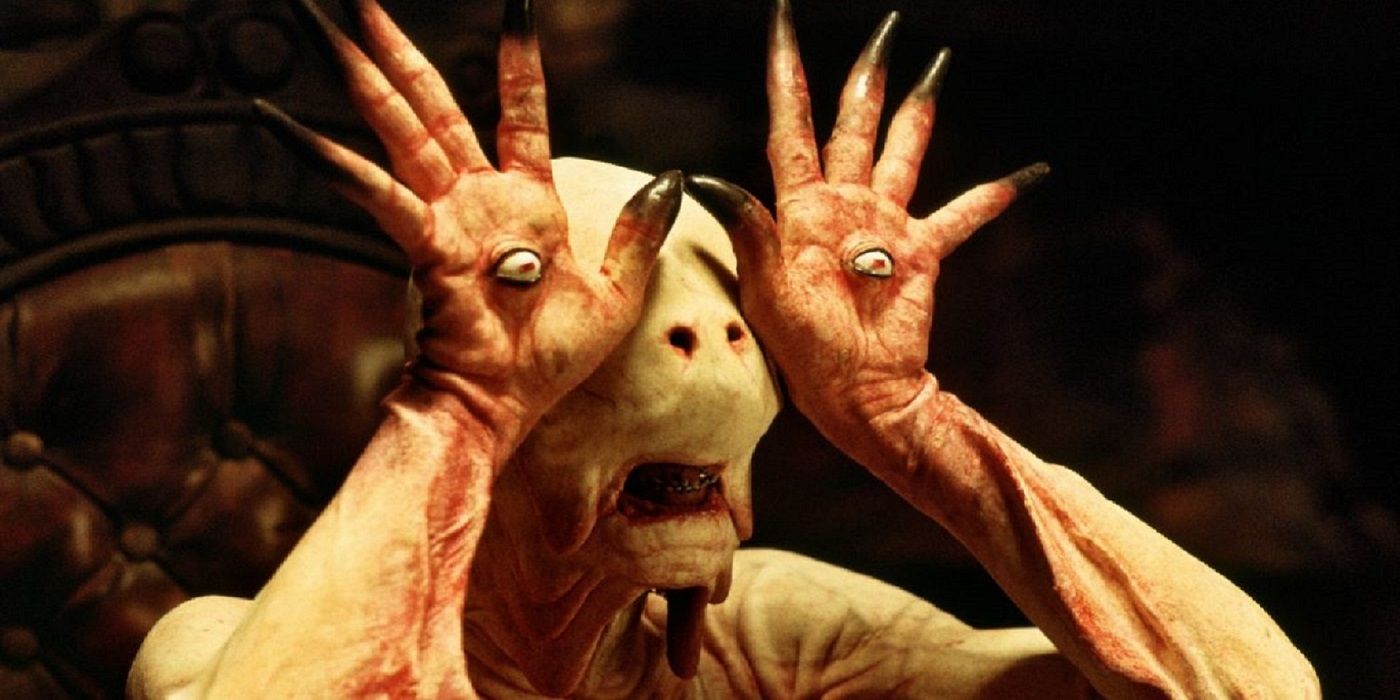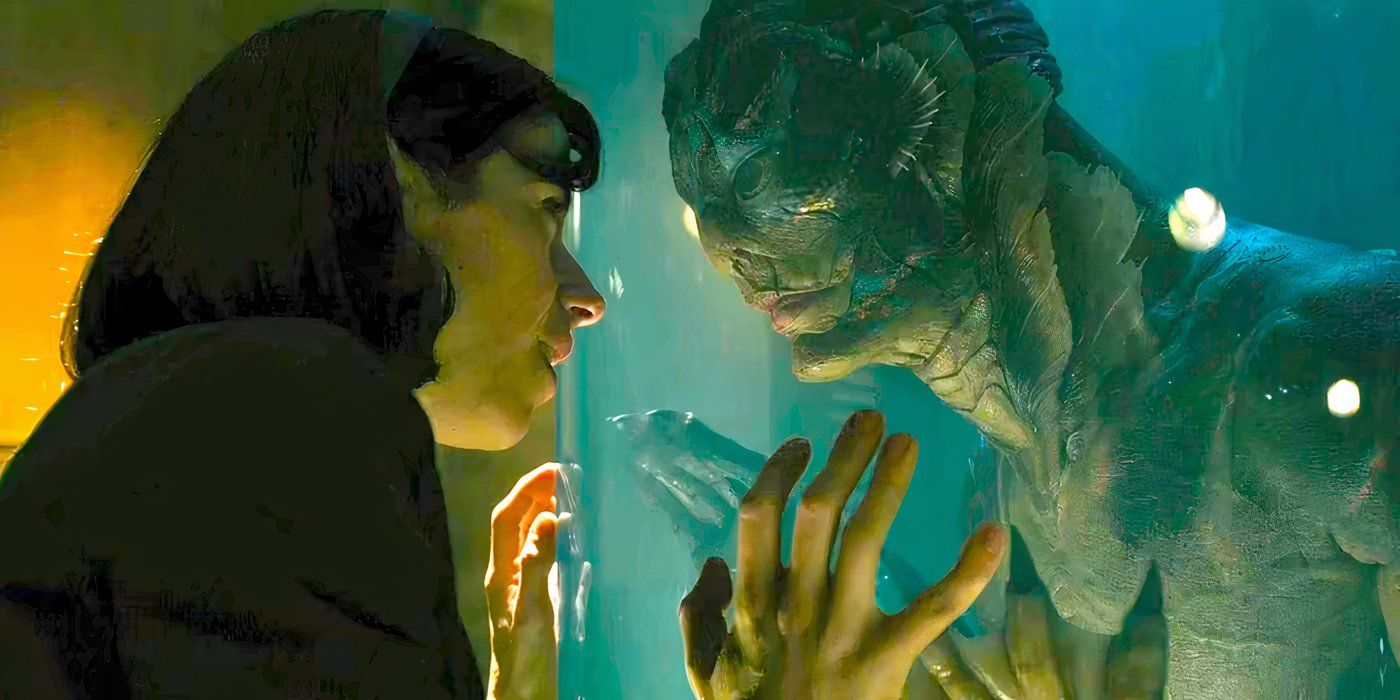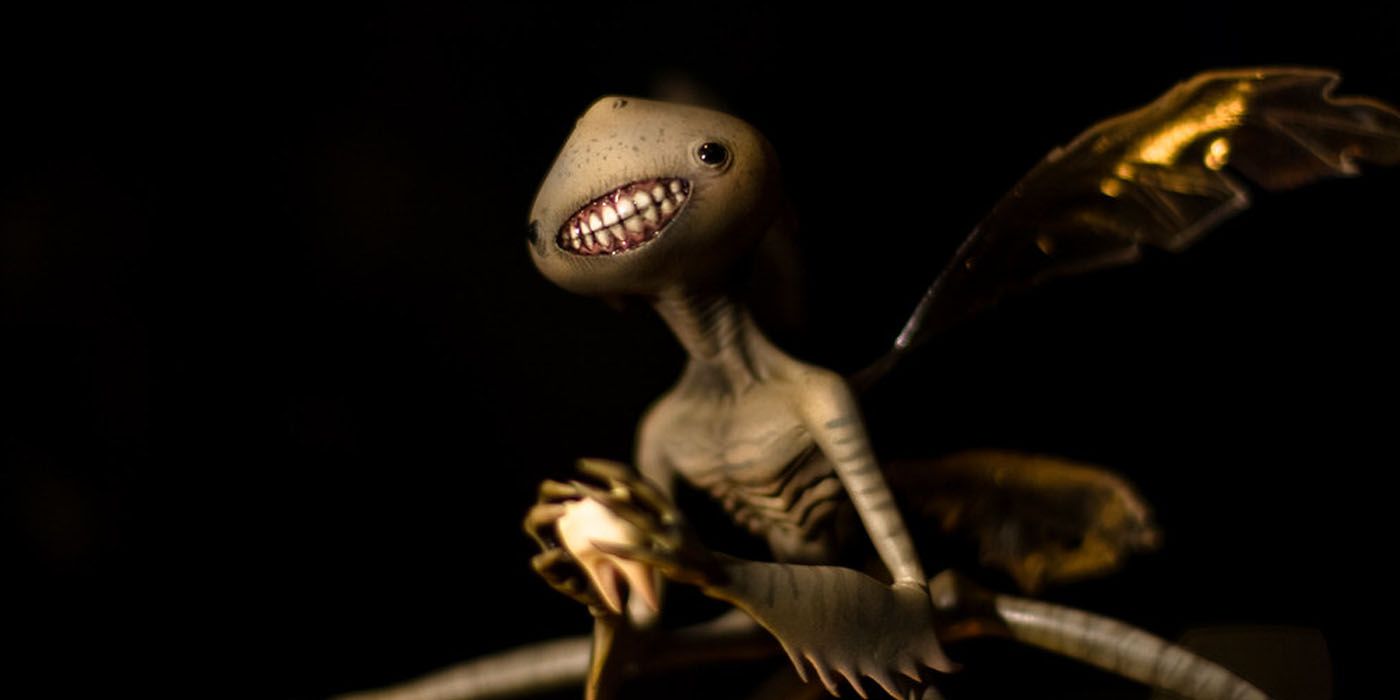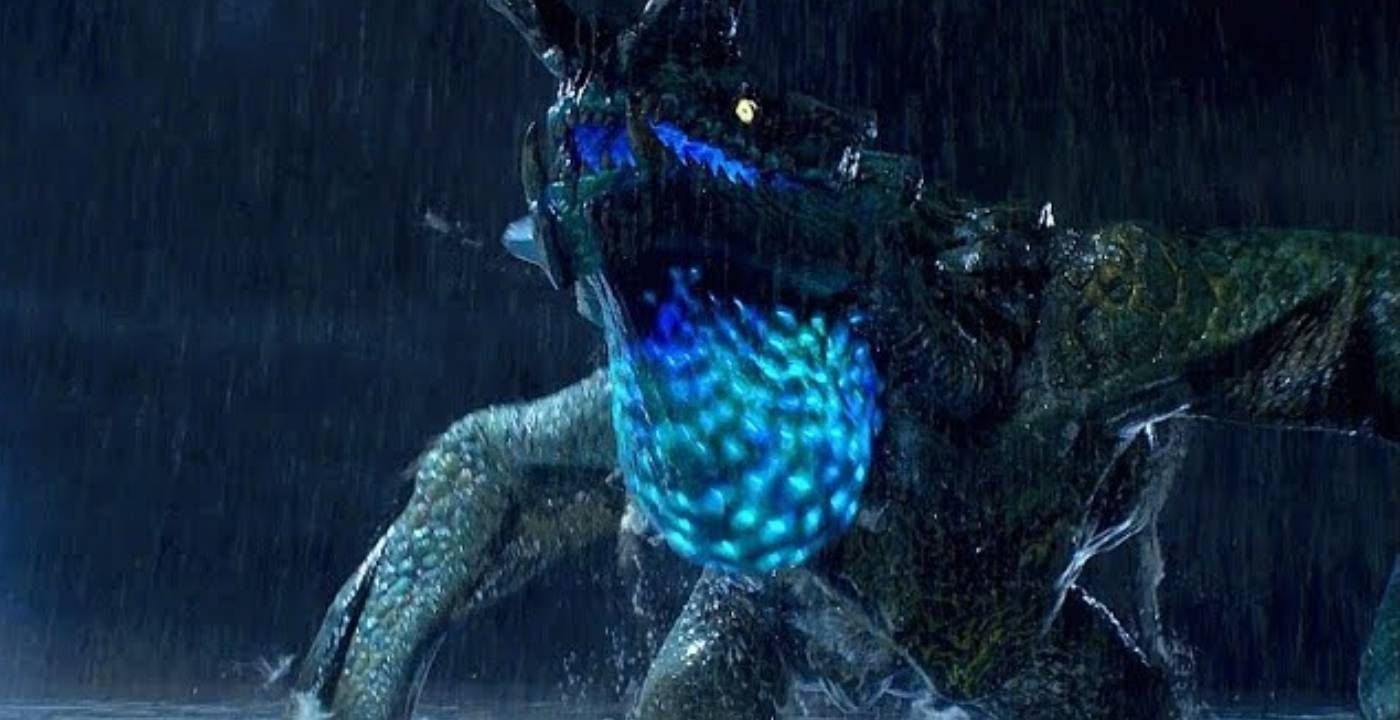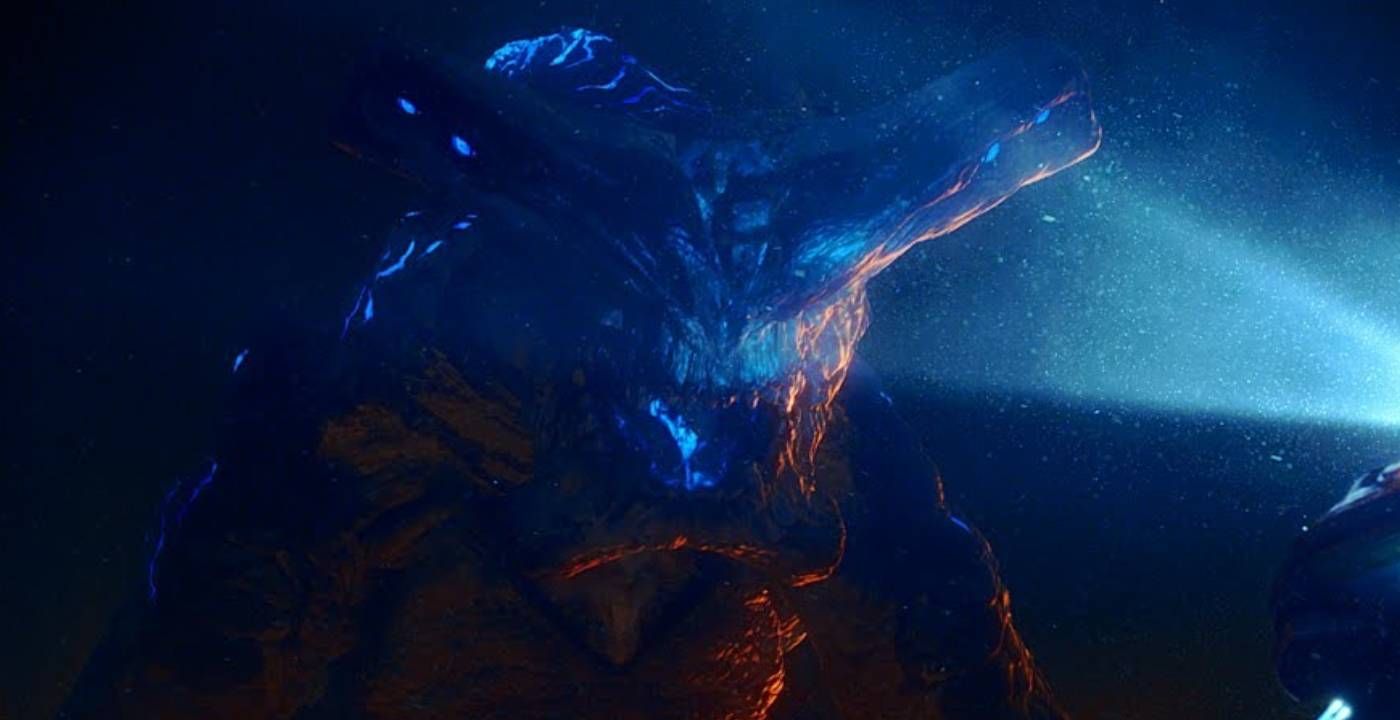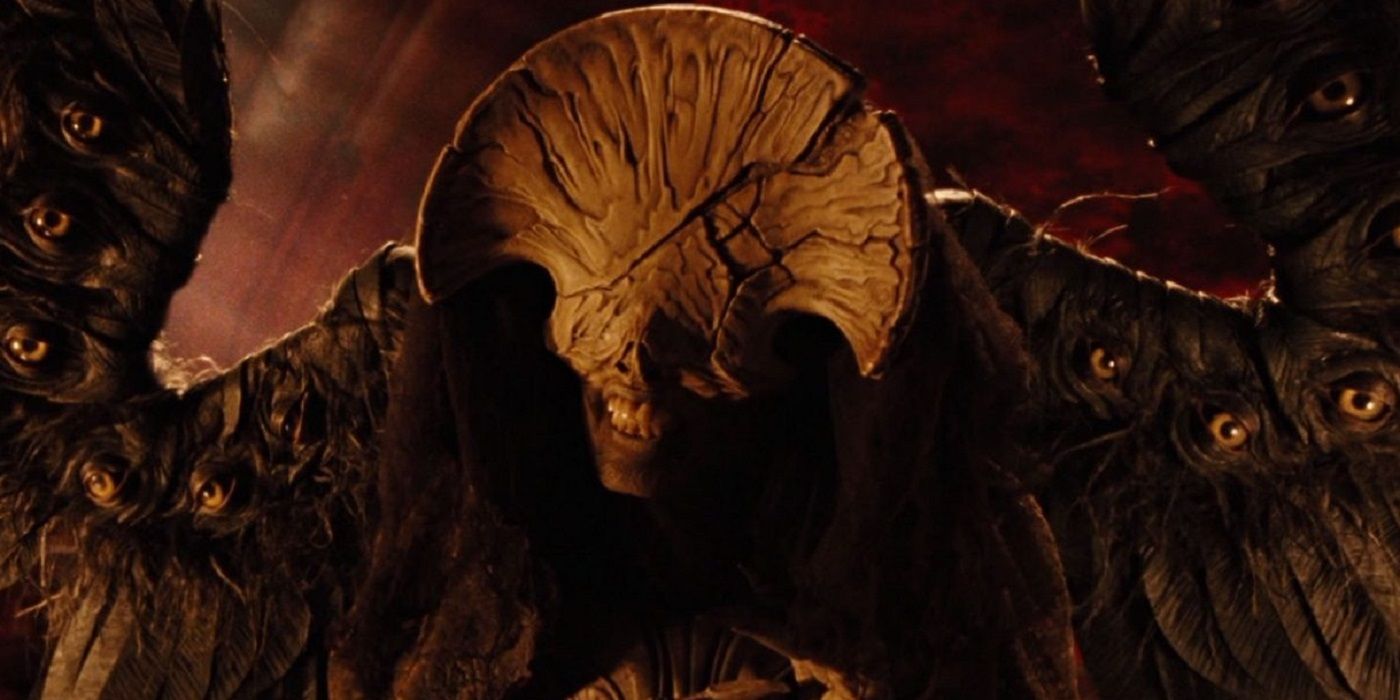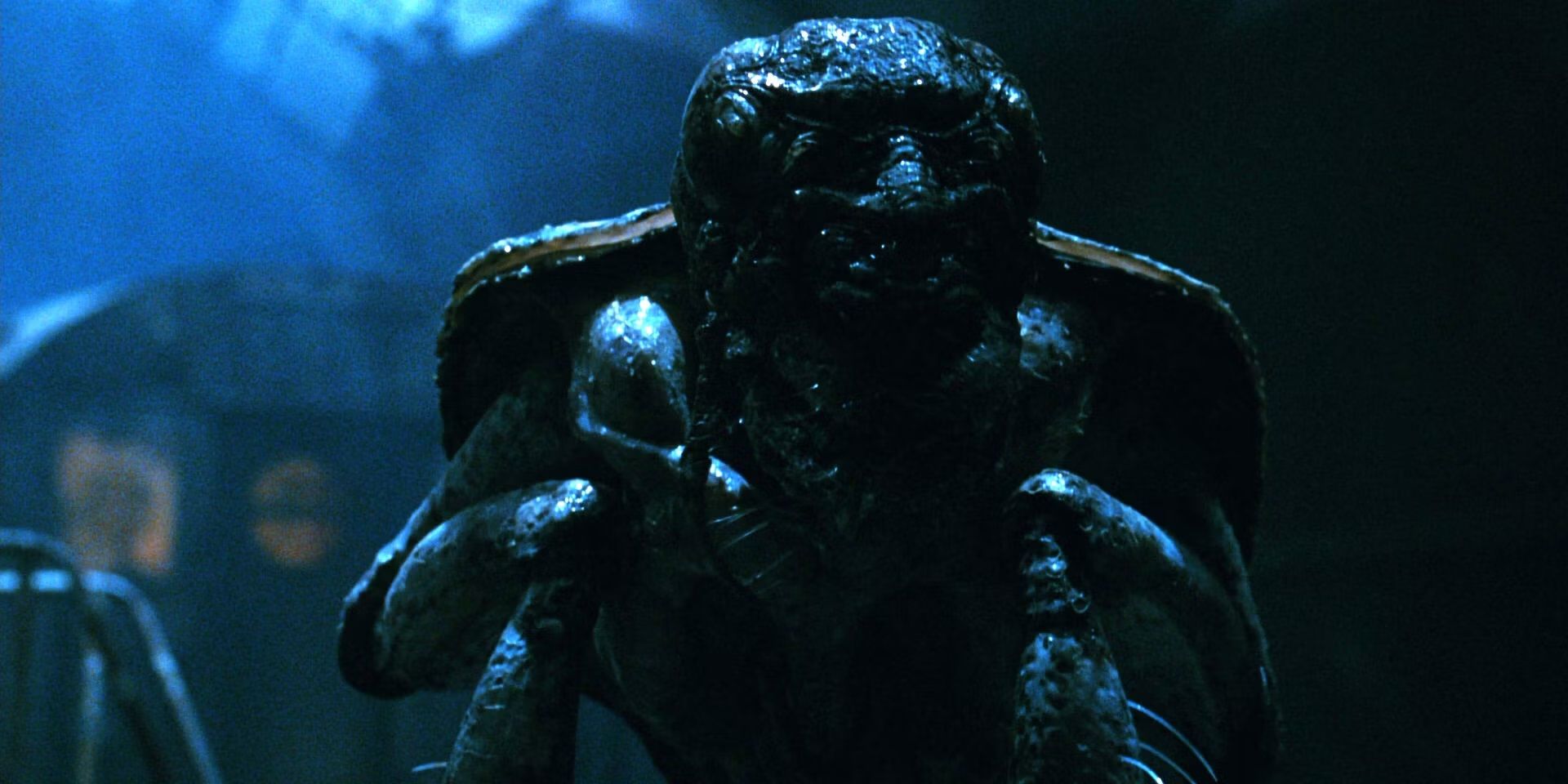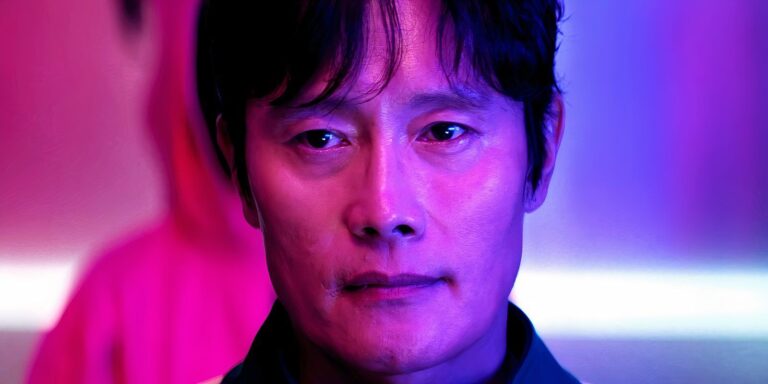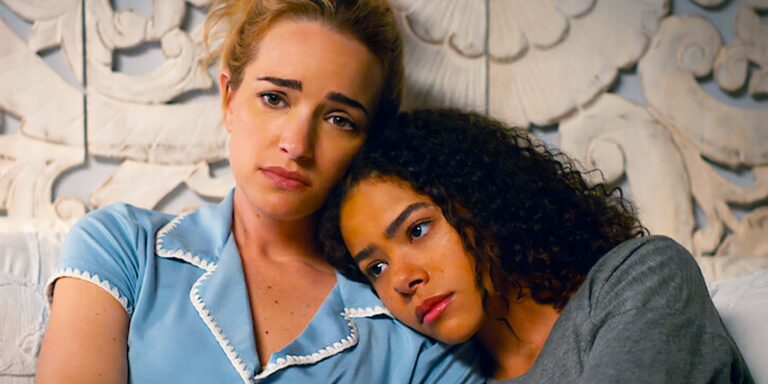Guillermo del Toro is the undisputed master of the creature feature in the modern day, using his creativity to craft a wild menagerie of striking monsters with his signature art direction. First gaining critical acclaim for his magnum opus, Pan’s Labyrinth, the Mexican filmmaker has endlessly proven himself as a master of horror movies, spooky stories, and dark fantasy epics. The one thing all of Guillermo del Toro’s best films have in common is some thrilling creature designs.
Del Toro’s monsters bear his signature art style, full of small details and creative touches that make their supernatural biology make sense while also seeming like an illustration come to life. There’s a good reason del Toro was so efficient at adapting Mike Mignola’s art in the original Hellboy duology, working with both practical effects and CGI over the years. Hopefully, his upcoming Frankenstein can bless the famous classic monster with one of his best cinematic designs yet.
8
Hellboy
Hellboy
Of course, Hellboy himself always bears special mention as one of Guillermo del Toro’s greatest creations. From his ape-like proportions to his cloven hooves, Hellboy is far from an easy character to adapt into live action, as was proven by the two live-action Hellboy films that came after Guillermo del Toro’s films. But somehow, del Toro manages to bring him to life, making key changes to the original design that help ground the demon in reality.
In truth, it’s Ron Perlman’s hall-of-fame performance that makes Hellboy work so well. The humanity he’s able to bring out through the heavy layers of makeup and demonic contact lenses shows off the tender side of the gruff, monstrous paranormal investigator. But Hellboy’s imposing Right Hand of Doom, animated tail, and sanded-down horns always remain a reminder of his hellish origins.
7
The Pale Man
Pan’s Labyrinth
Perhaps the single most famous monster of Guillermo del Toro’s career is none other than the Pale Man of Pan’s Labyrinth fame. The Pale Man appears as the most deadly foe the young Ofelia must face during her journeys into the strange, mystifying alternate world she finds herself in. During her second task, Ofelia finds the Pale Man lying dormant at an extravagant dining table, lined with a tantalizing feast. But upon succumbing to her temptation to take a bite, Ofelia brings the wicked Pale Man to life.
Looking like a shriveled, dessicated version of a person, with drooping folds of pale skin, black, necrotic fingertips, and rotting teeth, the Pale Man taps into uncanny valley fears thanks to his semi-human appearance. But it’s the lack of eyes on the Pale Man’s head that makes him so memorable, instead relying on removable eyes set into his palms to see. His ensuing chase with Ofelia and the way he viciously eats the heads off of hapless fairies only serve to justify his horrific appearance.
6
The Asset
The Shape of Water
It can never be said that Guillermo del Toro re-uses monster designs, though The Asset from The Shape of Water is the closest he’s come to it. Clearly iterative of fellow Creature from the Black Lagoon-esque aquatic humanoid Abe Sapien from Hellboy, the monster known only as “The Asset” in The Shape of Water is an intelligent amphibian who falls in love with a human woman. Explained to have existed undiscovered in South America, The Asset is captured by the military, hoping to glean some secrets from his unique biology.
Considering The Shape of Water is a story about a human woman falling in love with a monster, Guillermo del Toro needed to make audiences recognize his alien, ethereal beauty. This certainly comes across in his design, as colorful as a tropical fish lined with pointed fins that give an almost regal appearance. It says a lot about a filmmaker when they can ascribe so much humanity to such a foreign being. It’s no wonder The Shape of Water cleaned up at the 2018 Academy Awards.
5
The Tooth Fairies
Hellboy II: The Golden Army
While the first Hellboy gave Guillermo del Toro a decent amount of room to explore some creative monster designs, Hellboy II: The Golden Army expanded the scope of the world’s creatures far further. With more of a dark fantasy setting, one of the new mythical creatures introduced in the sequel are the Tooth Fairies, named after the friendly folklore figure that pays growing children for their missing baby teeth. However, del Toro’s vision for the Tooth Fairy is, expectedly, far darker.
Rather than being Tinkerbell-like pixies, the Tooth Fairies of the Hellboy world are horrific little insectoid beasts. Rather than paying people for teeth, they eat them, along with pretty much all other parts of the body including bones. Swarming through the air like ravenous piranhas, the Tooth Fairies’ mouths whine like dentist drills as they literally chew through hapless human BPRD agents. This is easily one of the most creative horror movie twists on a beloved children’s folklore figure ever conceived.
4
Otachi
Pacific Rim
Going from small, but deadly fairy tale creatures to massive, gargantuan threats on a global scale, Guillermo del Toro paid tribute to giant monster movies with Pacific Rim. Taking place in a world in which colossal Kaiju periodically rise from the depths of the ocean to wreak havoc on humanity, the film supposes that pairs of “drift compatible” warriors pair off to shoulder the massive burden of psychically piloting Jaegers, giant mechs capable of fighting the beasts. One of the coolest Kaiju in Pacific Rim is the insidious Otachi.
Showing up towards the back-end of the film, Otachi’s fight with Gypsy Danger is one of the most compelling, showing off her various adaptive abilities. From an acidic breath weapon to a gaping split jaw to unfolding leathery wings, Otachi proves herself to be one of the most versatile and tricky Kaiju the humans have to face. Her unique head with two eyestalk-like horns bearing extra points of vision is a testament to Guillermo del Toro’s ability to dream up unique body plans for all sorts of organisms.
3
Slattern
Pacific Rim
Otachi is far from the only creative monster in Pacific Rim worth mentioning against Guillermo del Toro’s wider career. Perhaps the single most threatening of all the Kaiju is Slattern, a massive hammerhead-like creature with multiple flail-like tails, wicked claws, and a powerful jaw. Fighting the Jaegers deep in the Pacific Ocean, Slattern’s particularly demonic-looking design is said to be inspired by the Devil himself, according to del Toro, along with the demonic Chernobog from Disney’s Fantasia.
As the first Category V Kaiju to be introduced in the Pacific Rim franchise, Slattern is an imposing figure worthy of this designation. Wickedly tough, surviving a point-blank nuclear detonation, Slattern is able to take out one of the most powerful Jaegers, Striker Eureka. His distinctive silhouette remains one of the more recognizable of the Pacific Rim Kaiju.
2
The Angel Of Death
Hellboy II: The Golden Army
The Tooth Fairy isn’t the only popular folklore figure corrupted by del Toro in Hellboy II: The Golden Army. Enter the Angel of Death, del Toro’s take on the classic image of the Grim Reaper. The Angel of Death appears before Liz Sherman after Hellboy is stabbed in the heart by Prince Nuada’s spear, presenting himself at a crossroads of fate, life, and death.
The Angel of Death appears in only a single scene, but it’s quietly one of the most captivating designs of del Toro’s entire career. Its withered, mummified body give the impression of a truly ancient being, and its eyeless face topped with a calcified halo-like crown makes a terrifying mockery of typical iconography associated with angels when paired with his crumbling black wings, dotted with eerie eyeballs. The Angel of Death is unforgettable, easily one of the best cinematic takes on death as a character ever conceived.
1
The Judas Breed
Mimic
As Guillermo del Toro’s first English-language film, Mimic often doesn’t get as much wide recognition as his other films. This is a real shame considering how compelling the centerpiece creatures of the film, the Judas Breed, are, especially for those with aversions to insects. Mutant lab-grown monsters spawned out of a desire to cure a roach-borne illness, the Judas Breed are a combination of mantis and termite DNA that go on to rapidly evolve from curious pests to human-sized aberrations dwelling in the sewers in only a few generations.
Their disgusting natural forms are brought to a whole new level of terror when they gain the ability to mimic human anatomy, becoming horrid combinations of person and bug. The practical effects sell the sickly, wet texture of the revolting creatures, and their terrifying natural weaponry is proven to be not just for show when it’s brought to bear. An overlooked monster in the zoo of Guillermo del Toro movies, the Judas Breed deserve more credit as a formative beast in his career.
